from ESPN https://ift.tt/2O1Hsgn
Prepping to Launch for the Sun

NASA’s Parker Solar Probe has cleared the final procedures in the clean room before its move to the launch pad. via NASA https://ift.tt/2ArdyQv
Layers of the South Pole of Mars

What lies beneath the layered south pole of Mars? A recent measurement with ground-penetrating radar from ESA's Mars Express satellite has detected a bright reflection layer consistent with an underground lake of salty water. The reflection comes from about 1.5-km down but covers an area 200-km across. Liquid water evaporates quickly from the surface of Mars, but a briny confined lake, such as implied by the radar reflection, could last much longer and be a candidate to host life such as microbes. Pictured, an infrared, green, and blue image of the south pole of Mars taken by Mars Express in 2012 shows a complex mixture of layers of dirt, frozen carbon dioxide, and frozen water. via NASA https://ift.tt/2Assi1K
Johnny Cueto of San Francisco Giants may end up having Tommy John surgery
from ESPN https://ift.tt/2v34yMt
Soaring Into an Orbital Sunrise

The International Space Station soars into a sunrise every 90 minutes, each and every day. via NASA https://ift.tt/2K8V2w9
Journey to the Center of the Galaxy

What wonders lie at the center of our Galaxy? In Jules Verne's science fiction classic A Journey to the Center of the Earth, Professor Liedenbrock and his fellow explorers encounter many strange and exciting wonders. Astronomers already know of some of the bizarre objects that exist at our Galactic center, including like vast cosmic dust clouds, bright star clusters, swirling rings of gas, and even a supermassive black hole. Much of the Galactic Center is shielded from our view in visible light by the intervening dust and gas, but it can be explored using other forms of electromagnetic radiation. The featured video is actually a digital zoom into the Milky Way's center which starts by utilizing visible light images from the Digitized Sky Survey. As the movie proceeds, the light shown shifts to dust-penetrating infrared and highlights gas clouds that were recently discovered in 2013 to be falling toward central black hole. In 2018 May, observations of a star passing near the Milky Way's central black hole showed, for the first time, a gravitational redshift of the star's light -- as expected from Einstein's general relativity. via NASA https://ift.tt/2uXMint
One Night One Telescope One Camera

Taken on the same night, from the same place, with the same telescope and camera, these postcards from our Solar System are shown at the same scale to provide an interesting comparison of apparent sizes. Spanning about half a degree in planet Earth's sky, the Moon is a stitched mosaic of six images. The others are the result of digitally stacked frames or simple single exposures, with the real distances to the objects indicated along the bottom of each insert. Most of the Solar System's planets with their brighter moons, and Pluto were captured during the telescopic expedition, but elusive Mercury was missed because of clouds near the horizon. The International Space Station was successfully hunted, though. The night was July 21st. Telescope and camera were located at the Centro Astronomico de Tiedra Observatory in Spain. via NASA https://ift.tt/2LSze9G
Hubble Takes Portrait of Opulent Ring World

Saturn is the solar system’s most photogenic planet, especially in this latest Hubble snapshot with the ring system near its maximum tilt. via NASA https://ift.tt/2v8RBQA
Mars Opposition

Look opposite the Sun in the sky tonight and you'll see Mars at its brightest. Also within days of its closest approach Mars rises at sunset, near its brightest and best for telescopic observers too, except for the dust storm still blanketing the Red Planet. These two Hubble Space Telescope images compare Mars' appearance near its 2016 and 2018 oppositions. In 2016 the martian atmosphere was clear. Captured just days ago, the 2018 image shows almost the same face of Mars. Surface features obscured by dust, the planet's cloud enshrouded south pole is tilted more toward the Sun. Increased heat in the southern hemisphere spring and summer likely triggers planet wide dust storms. Of course, if you look opposite the Sun in the sky tonight, you'll also see a Full Moon near Mars. Skygazers NOT located in North America could see the Red Planet near a Red Moon during a Total Lunar Eclipse. via NASA https://ift.tt/2v8fnMj
From Interns to Astronauts

July 26 is National Intern Day. See how far these two former interns at NASA's Jet Propulsion Laboratory have come! via NASA https://ift.tt/2mJYRhJ
Barnard 228: The Dark Wolf Nebula in Lupus

These dark markings on the sky can just be found in silhouette against a rich, luminous background of stars. Seen toward the southern constellation of Lupus the Wolf, the dusty, obscuring clouds are part of the Lupus Molecular Cloud some 500 light-years distant. Packs of low mass stars are forming within them, from collapsing cores only visible at long infrared wavelengths. Still, colorful stars in Lupus add to this pretty galactic skyscape. It spans about 8 degrees, not far from the central Milky Way. via NASA https://ift.tt/2mHauGl
Flown Orion Spacecraft Visits Washington, DC, for Made in America Showcase

NASA's Orion spacecraft that flew Exploration Flight Test-1 on Dec. 5, 2014, is seen after being uncovered in preparation for being moved onto the White House complex, Saturday, July 21, 2018, in Washington, DC. More than 1,000 companies across the country manufactured or contributed elements to the spacecraft. via NASA https://ift.tt/2Lz15P8
The Edge On Spindle Galaxy

What kind of celestial object is this? A relatively normal galaxy -- but seen from its edge. Many disk galaxies are actually just as thin as NGC 5866, pictured here, but are not seen edge-on from our vantage point. A perhaps more familiar galaxy seen edge-on is our own Milky Way Galaxy. Cataloged as M102 and NGC 5866, the Spindle galaxy has numerous and complex dust lanes appearing dark and red, while many of the bright stars in the disk give it a more blue underlying hue. The blue disk of young stars can be seen extending past the dust in the extremely thin galactic plane. There is evidence that the Spindle galaxy has cannibalized smaller galaxies over the past billion years or so, including multiple streams of faint stars, dark dust that extends away from the main galactic plane, and a surrounding group of galaxies (not shown). In general, many disk galaxies become thin because the gas that forms them collides with itself as it rotates about the gravitational center. The Spindle galaxy lies about 50 million light years distant toward the constellation of the Dragon (Draco). via NASA https://ift.tt/2A7FIjr
Candid Apollo

On July 24, 1969, the Apollo 11 crew splashed down in the Pacific Ocean. via NASA https://ift.tt/2JQl0nC
Clouds of Earth and Sky

If you go high enough, you may find yourself on a picturesque perch between the water clouds of the Earth and the star clouds of the Milky Way. Such was the case last month for one adventurous alpinist astrophotographer. Captured here in the foreground above white clouds are mountain peaks in the Dolomite range in northern Italy. This multi-exposure image was captured from Lagazuoi, one of the Dolomites. Hundreds of millions of years ago, the Dolomites were not mountains but islands an ancient sea that rose through colliding tectonic plates. The Dolomites divergent history accounts for its unusually contrasting features, which include jagged crests and ancient marine fossils. High above even the Dolomites, and far in the distance, dark dust lanes streak out from the central plane of our Milky Way Galaxy. The stars and dust are dotted with bright red clouds of glowing hydrogen gas -- such as the Lagoon Nebula just above and to the left of center. via NASA https://ift.tt/2JUnnWU
Iceberg Towers Over Greenland Village

In July 2018, an iceberg weighing 11 million tons parked just offshore of Innaarsuit, a small island village in northwestern Greenland. via NASA https://ift.tt/2mB6oPX
Fermi Science Finals
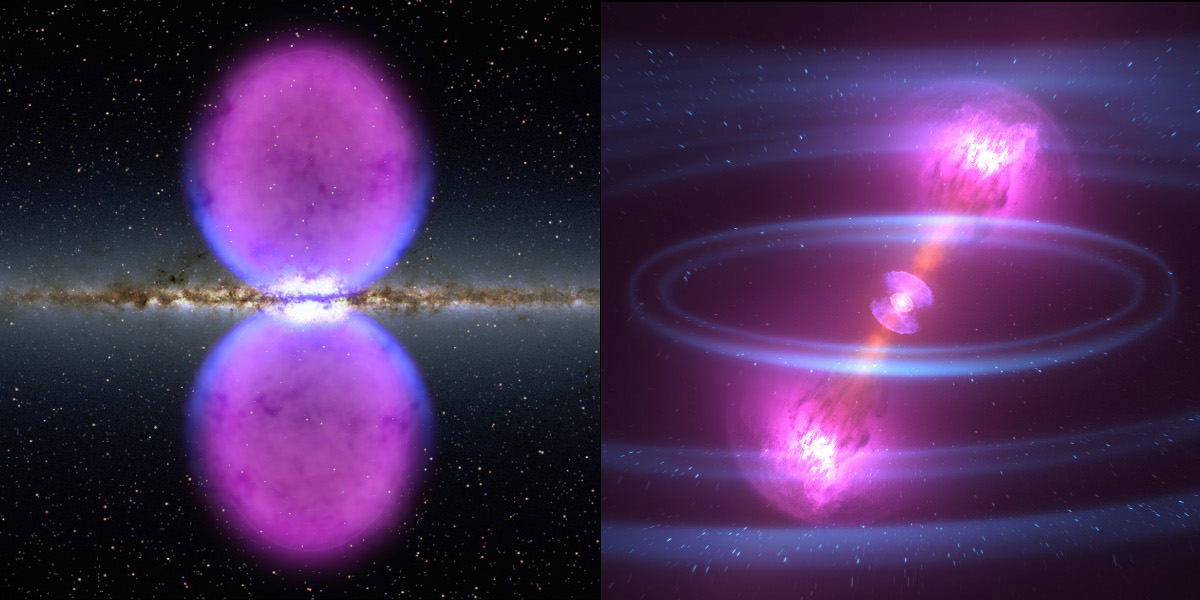
The Fermi Science Playoffs celebrate 10 years of the Fermi Gamma-ray Space Telescope's exploration of the high-energy universe. Surviving all early rounds of voting, these two finalists in the competion square off at last. Digital illustrations from a list of 16 of Fermi's top scientific discoveries, they represent the competition's two top seeds, defeating 12th seed New Clues to Dark Matter and 14th seed Starquakes in Magnetar Storm in the semifinal round. On the left are unprecedented, unpredicted, 25,000 light-year tall Gamma-ray Bubbles above and below the plane of our Milky Way galaxy. On the right, violently merging Neutron Stars Collide to create the first gamma-ray detected gravitational wave event. Pick one now and cast your vote here to crown the most popular science result from Fermi's first decade. via NASA https://ift.tt/2LGerG7
Apollo 11 Landing Site Panorama
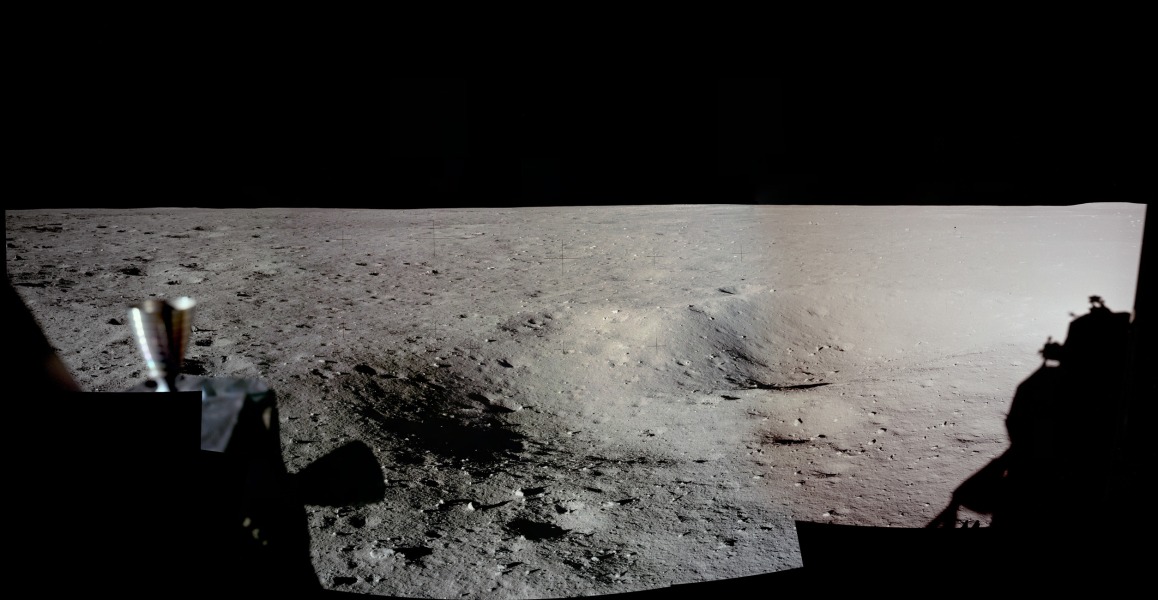
Have you seen a panorama from another world lately? Assembled from high-resolution scans of the original film frames, this one sweeps across the magnificent desolation of the Apollo 11 landing site on the Moon's Sea of Tranquility. The images were taken by Neil Armstrong looking out his window of the Eagle Lunar Module shortly after the July 20, 1969 landing. The frame at the far left (AS11-37-5449) is the first picture taken by a person on another world. Toward the south, thruster nozzles can be seen in the foreground on the left, while at the right, the shadow of the Eagle is visible to the west. For scale, the large, shallow crater on the right has a diameter of about 12 meters. Frames taken from the Lunar Module windows about an hour and a half after landing, before walking on the lunar surface, were intended to initially document the landing site in case an early departure was necessary. via NASA https://ift.tt/2mwHsco
At Tranquility Base

Forty-nine years ago on July 20, 1969, humanity stepped foot on another celestial body and into history. via NASA https://ift.tt/2mu3EUm
Testing Satellite Servicing Technologies

NASA's satellite servicing technologies are opening up a new world where space robots diagnose, maintain and extend a spacecraft’s life. via NASA https://ift.tt/2Ltngmy
Cerealia Facula

Cerealia Facula, also known as the brightest spot on Ceres, is shown in this stunning mosaic close-up view. The high-resolution image data was recorded by the Dawn spacecraft, in a looping orbit, from altitudes as low as 34 kilometers (21 miles) above the dwarf planet's surface. Cerealia Facula is about 15 kilometers wide, found in the center of 90 kilometer diameter Occator crater. Like the other bright spots (faculae) scattered around Ceres, Cerealia Facula is not ice, but an exposed salty residue with a reflectivity like dirty snow. The residue is thought to be mostly sodium carbonate and ammonium chloride from a slushy brine within or below the dwarf planet's crust. Driven by advanced ion propulsion on an 11-year mission, Dawn explored main-belt asteriod Vesta before traveling on to Ceres. But sometime between this August and October, the interplanetary spacecraft is expected to finally run out of fuel for its hydrazine thrusters, with the subsequent loss of control of its orientation, losing power and the ability to communicate with Earth. Meanwhile Dawn will continue to explore Ceres in unprecedented detail, and ultimately retire in its orbit around the small world. via NASA https://ift.tt/2Jzh2zV
Orion Parachutes Chalk Up Another Test Success in Arizona

The parachute system for Orion, America’s spacecraft that will carry humans to deep space, deployed as planned after being dropped from an altitude of 6.6 miles on July 12, at the U.S. Army Proving Ground in Yuma, Arizona. via NASA https://ift.tt/2Nr9KQX
Dark Slope Streaks Split on Mars
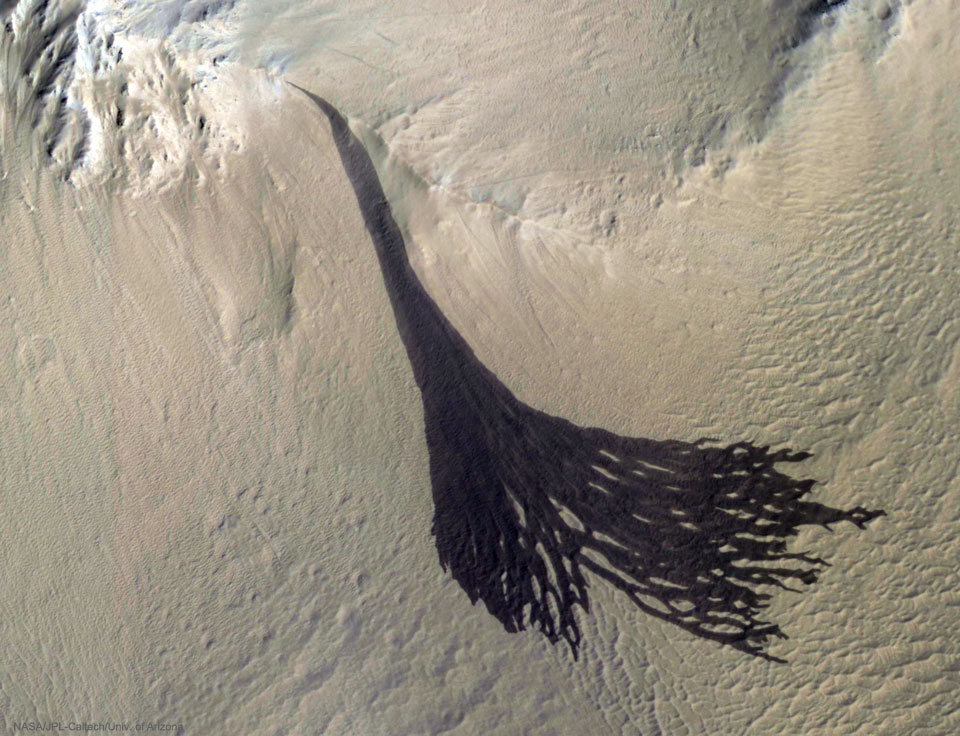
What is creating these dark streaks on Mars? No one is sure. Candidates include dust avalanches, evaporating dry ice sleds, and liquid water flows. What is clear is that the streaks occur through light surface dust and expose a deeper dark layer. Similar streaks have been photographed on Mars for years and are one of the few surface features that change their appearance seasonally. Particularly interesting here is that larger streaks split into smaller streaks further down the slope. The featured image was taken by the HiRISE camera on board the Mars-orbiting Mars Reconnaissance Orbiter (MRO) several months ago. Currently, a global dust storm is encompassing much of Mars. via NASA https://ift.tt/2uIXuDJ
Churning in the Chukchi Sea

Regardless of the amount of winter ice cover, the waters off of the Alaskan coast usually come alive each spring with blooms of phytoplankton. via NASA https://ift.tt/2NWw1XS
Moon and Venus over Cannon Beach
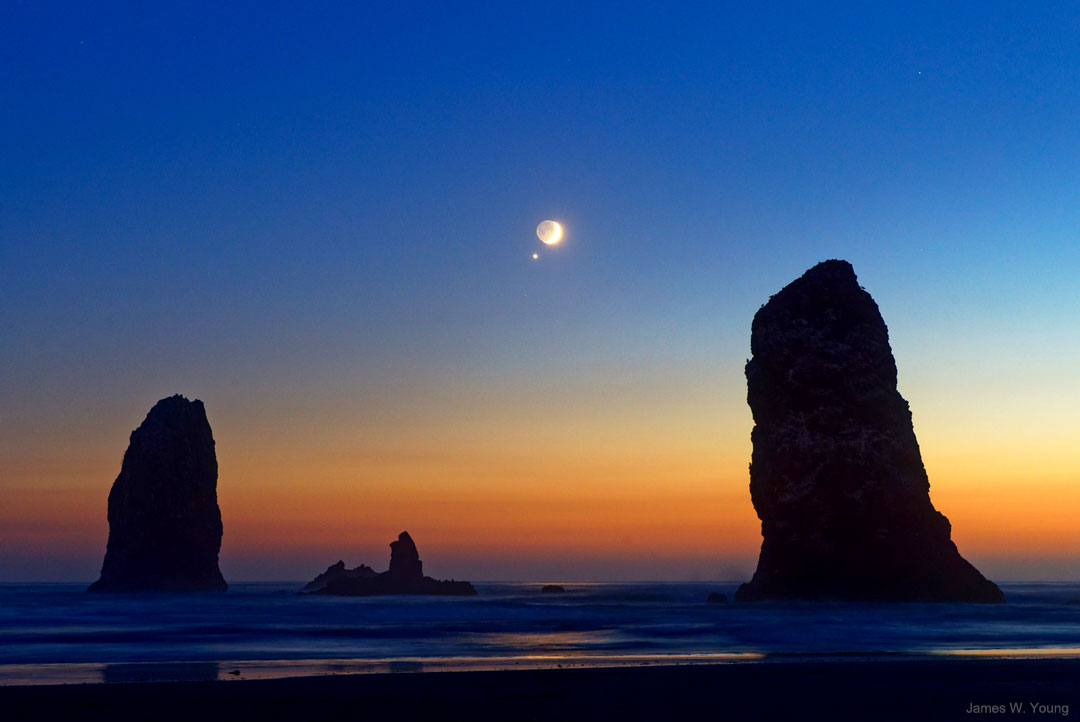
What's that spot next to the Moon? Venus. Two days ago, the crescent Moon slowly drifted past Venus, appearing within just two degrees at its closest. This conjunction, though, was just one of several photographic adventures for our Moon this month (moon-th), because, for one, a partial solar eclipse occurred just a few days before, on July 12. Currently, the Moon appears to be brightening, as seen from the Earth, as the fraction of its face illuminated by the Sun continues to increase. In a few days, the Moon will appear more than half full, and therefore be in its gibbous phase. Next week the face of the Moon that always faces the Earth will become, as viewed from the Earth, completely illuminated by the Sun. Even this full phase will bring an adventure, though, as a total eclipse of this Thunder Moon will occur on July 27. Don't worry about our Luna getting tired, though, because she'll be new again next month (moon-th) -- August 11 to be exact -- just as she causes another partial eclipse of the Sun. Pictured, Venus and the Moon were captured from Cannon Beach above a rock formation off the Oregon (USA) coast known as the Needles. About an hour after this image was taken, the spin of the Earth caused both Venus and the Moon to set. via NASA https://ift.tt/2zKXZ62
A Merger of Stars

Launched 15 years ago, the Spitzer Space Telescope has made many discoveries, including this detection of the merger of two neutron stars. via NASA https://ift.tt/2Ngz5gv
Neutrino Associated with Distant Blazar Jet
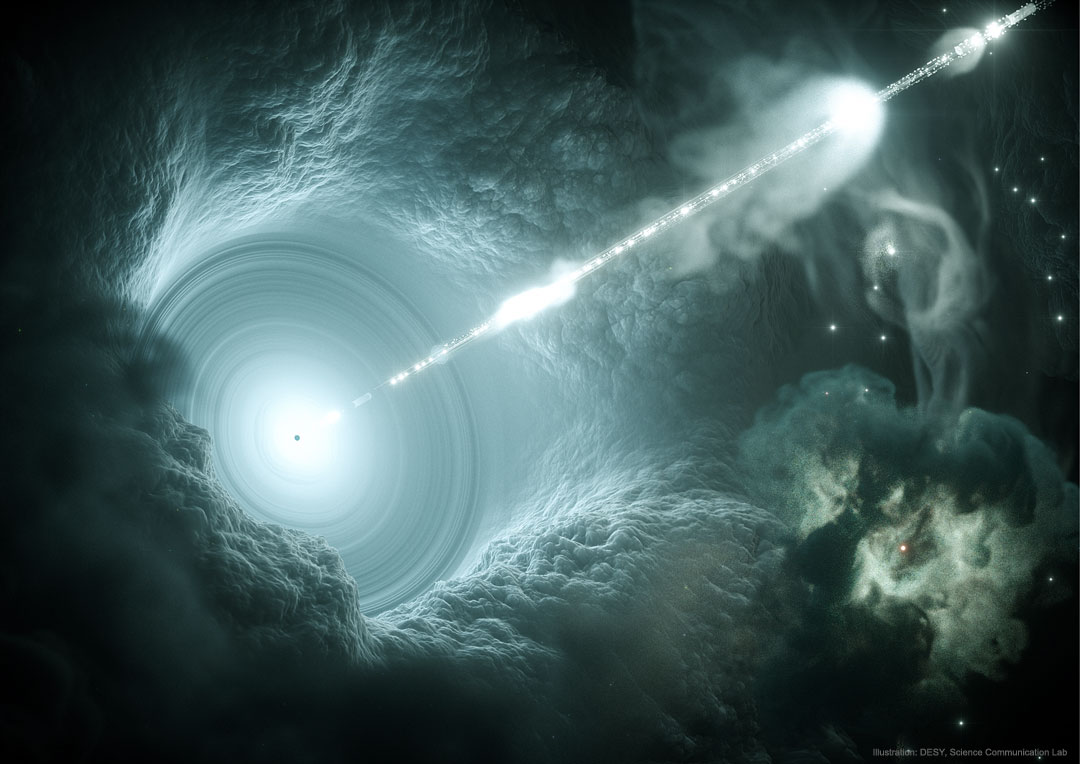
With equipment frozen deep into ice beneath Earth's South Pole, humanity appears to have discovered a neutrino from far across the universe. If confirmed, this would mark the first clear detection of cosmologically-distant neutrinos and the dawn of an observed association between energetic neutrinos and cosmic rays created by powerful jets emanating from blazing quasars (blazars). Once the Antarctican IceCube detector measured an energetic neutrino in 2017 September, many of humanity's premier observatories sprang into action to try to identify a counterpart in light. And they did. An erupting counterpart was pinpointed by high energy observatories including AGILE, Fermi, HAWC, H.E.S.S., INTEGRAL, NuSTAR, Swift, and VERITAS, which found that gamma-ray blazar TXS 0506+056 was in the right direction and with gamma-rays from a flare arriving nearly coincidental in time with the neutrino. Even though this and other position and time coincidences are statistically strong, astronomers will await other similar neutrino - blazar light associations to be absolutely sure. Pictured here is an artist's drawing of a particle jet emanating from a black hole at the center of a blazar. via NASA https://ift.tt/2NOYoHs
Rings Around the Ring Nebula

There is much more to the familiar Ring Nebula (M57), however, than can be seen through a small telescope. The easily visible central ring is about one light-year across, but this remarkably deep exposure - a collaborative effort combining data from three different large telescopes - explores the looping filaments of glowing gas extending much farther from the nebula's central star. This remarkable composite image includes narrowband hydrogen image, visible light emission, and infrared light emission. Of course, in this well-studied example of a planetary nebula, the glowing material does not come from planets. Instead, the gaseous shroud represents outer layers expelled from a dying, sun-like star. The Ring Nebula is about 2,000 light-years away toward the musical constellation Lyra. via NASA https://ift.tt/2zFxy1x
A Nibble on the Sun
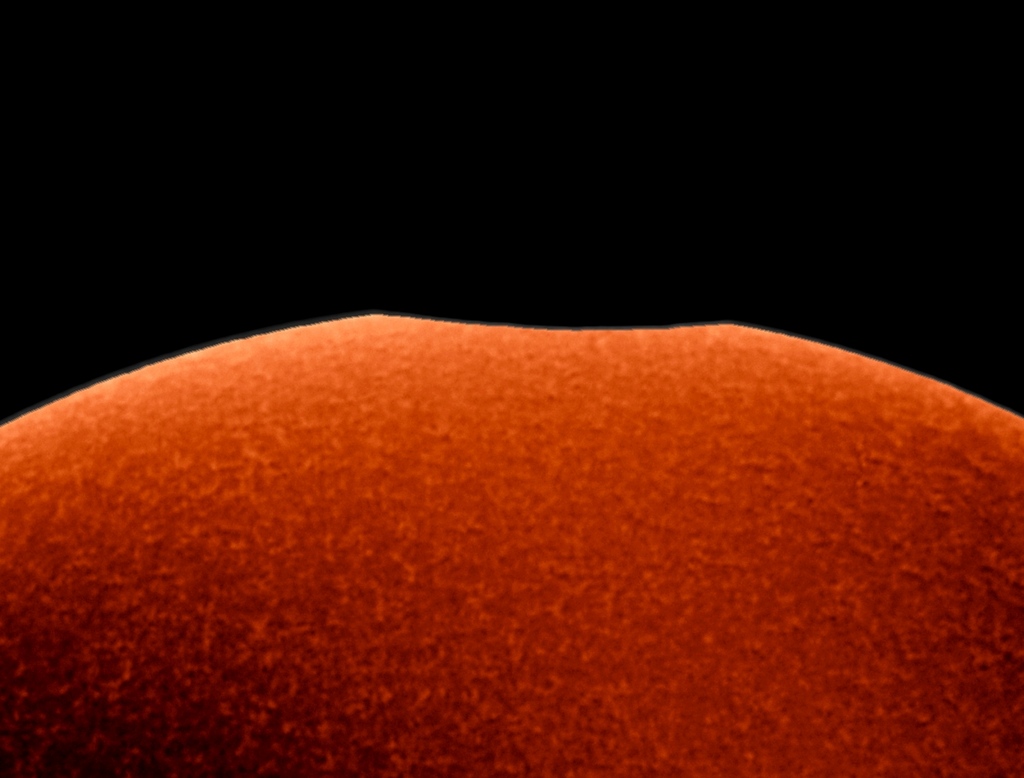
The smallest of the three partial solar eclipses during 2018 was just yesterday, Friday, July 13. It was mostly visible over the open ocean between Australia and Antarctica. Still, this video frame of a tiny nibble on the Sun was captured through a hydrogen-alpha filter from Port Elliott, South Australia, during the maximum eclipse visible from that location. There, the New Moon covered about 0.16 percent of the solar disk. The greatest eclipse, about one-third of the Sun's diameter blocked by the New Moon, could be seen from East Antarctica near Peterson Bank, where the local emperor penguin colony likely had the best view. During this prolific eclipse season, the coming Full Moon will bring a total lunar eclipse on July 27, followed by yet another partial solar eclipse at the next New Moon on August 11. via NASA https://ift.tt/2Liqnhg
Jamming with the 'Spiders' from Mars

This image from NASA's Mars Reconnaissance Orbiter, acquired May 13, 2018 during winter at the South Pole of Mars, shows a carbon dioxide ice cap covering the region and as the sun returns in the spring, "spiders" begin to emerge from the landscape. via NASA https://ift.tt/2LgTC42
Star Trails and the Bracewell Radio Sundial

Sundials use the location of a shadow to measure the Earth's rotation and indicate the time of day. So it's fitting that this sundial, at the Very Large Array Radio Telescope Observatory in New Mexico, commemorates the history of radio astronomy and radio astronomy pioneer Ronald Bracewell. The radio sundial was constructed using pieces of a solar mapping radio telescope array that Bracewell orginaly built near the Stanford University campus. Bracewell's array was used to contribute data to plan the first Moon landing, its pillars signed by visiting scientists and radio astronomers, including two Nobel prize winners. As for most sundials the shadow cast by the central gnomon follows markers that show the solar time of day, along with solstices and equinoxes. But markers on the radio sundial are also laid out according to local sidereal time. They show the position of the invisible radio shadows of three bright radio sources in Earth's sky, supernova remnant Cassiopeia A, active galaxy Cygnus A, and active galaxy Centaurus A. Sidereal time is just star time, the Earth's rotation as measured with the stars and distant galaxies. That rotation is reflected in this composited hour-long exposure. Above the Bracewell Radio Sundial, the stars trace concentric trails around the north celestial pole. via NASA https://ift.tt/2mjr1Ah
'X'-ploring the Eagle Nebula and 'Pillars of Creation'

The Eagle Nebula, also known as Messier 16, contains the young star cluster NGC 6611. It also the site of the spectacular star-forming region known as the Pillars of Creation, which is located in the southern portion of the Eagle Nebula. via NASA https://ift.tt/2NLowD9
Centaurus A

Only 11 million light-years away, Centaurus A is the closest active galaxy to planet Earth. Spanning over 60,000 light-years, the peculiar elliptical galaxy also known as NGC 5128, is featured in this sharp telescopic view. Centaurus A is apparently the result of a collision of two otherwise normal galaxies resulting in a fantastic jumble of star clusters and imposing dark dust lanes. Near the galaxy's center, left over cosmic debris is steadily being consumed by a central black hole with a billion times the mass of the Sun. As in other active galaxies, that process likely generates the radio, X-ray, and gamma-ray energy radiated by Centaurus A. via NASA https://ift.tt/2L4s98z
The Heart of Madagascar

As the International Space Station flew overhead, NASA astronaut Ricky Arnold captured this photograph of a changing landscape in the heart of Madagascar, observing drainage into the sea in the Betsiboka Estuary due to decimation of rainforests and coastal mangroves. via NASA https://ift.tt/2NLGEfY
Symbiotic R Aquarii
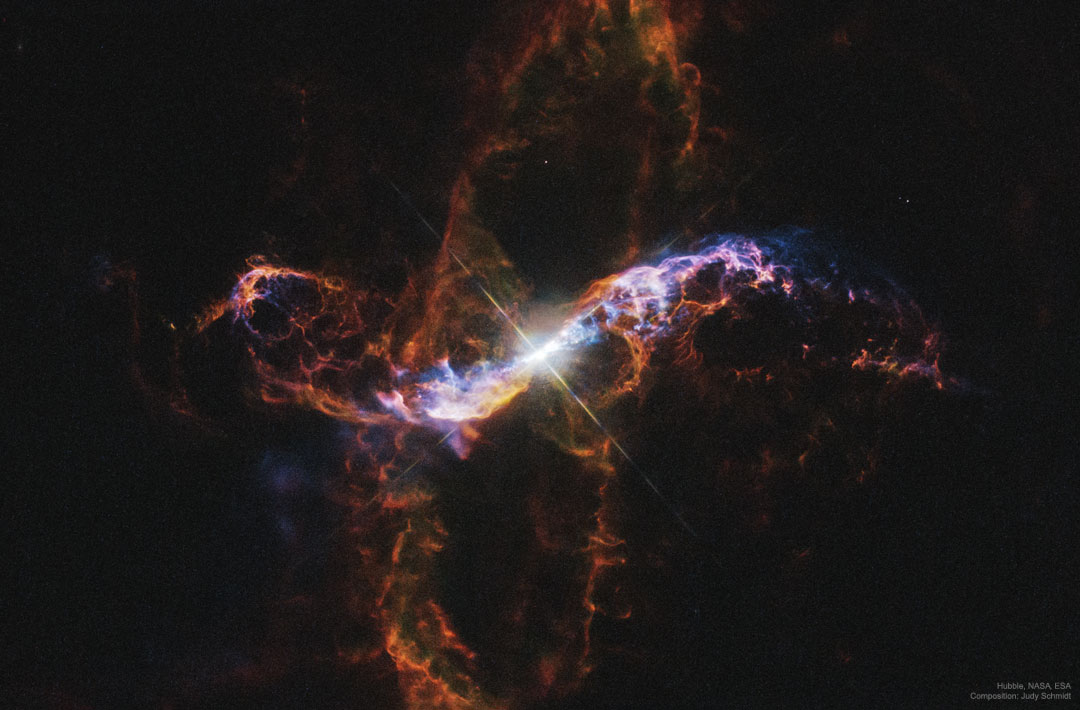
You can see it change in brightness with just binoculars over the course of a year. Variable star R Aquarii is actually an interacting binary star system, two stars that seem to have a close, symbiotic relationship. About 710 light years away, this intriguing system consists of a cool red giant star and hot, dense white dwarf star in mutual orbit around their common center of mass. The binary system's visible light is dominated by the red giant, itself a Mira-type long period variable star. But material in the cool giant star's extended envelope is pulled by gravity onto the surface of the smaller, denser white dwarf, eventually triggering a thermonuclear explosion and blasting material into space. The featured image from the Hubble Space Telescope shows the still-expanding ring of debris which spans less than a light year and originated from a blast that would have been seen in the early 1770s. The evolution of less understood energetic events producing high energy emission in the R Aquarii system has been monitored since 2000 using Chandra X-ray Observatory data. via NASA https://ift.tt/2unkUye
2018 Class of NASA Flight Directors for the Mission Control Center

NASA has selected six women and men to join the elite corps of flight directors who will lead mission control for a variety of new operations at the agency’s Johnson Space Center in Houston. via NASA https://ift.tt/2uleobi
Noctilucent Clouds over Paris Fireworks

It's northern noctilucent cloud season -- perhaps a time to celebrate! Composed of small ice crystals forming only during specific conditions in the upper atmosphere, noctilucent clouds may become visible at sunset during late summer when illuminated by sunlight from below. Noctilucent clouds are the highest clouds known and now established to be polar mesospheric clouds observed from the ground. Although observed with NASA's AIM satellite since 2007, much about noctilucent clouds remains unknown and so a topic of active research. The featured time-lapse video shows expansive and rippled noctilucent clouds wafting over Paris, France, during a post-sunset fireworks celebration on Bastille Day in 2009 July. This year, several locations are already reporting especially vivid displays of noctilucent clouds. via NASA https://ift.tt/2m4T9qw
A Closer View of the Moon

Posted to Twitter by @Astro_Alex, European Space Agency astronaut Alexander Gerst, this image shows our planet's Moon as seen from the International Space Station. via NASA https://ift.tt/2NzWwSS
Road to Mars

What's that light at the end of the road? Mars. This is a good month to point out Mars to your friends and family because our neighboring planet will not only be its brightest in 15 years, it will be visible for much of night. During this month, Mars will be about 180 degrees around from the Sun, and near the closest it ever gets to planet Earth. In terms of orbits, Mars is also nearing the closest point to the Sun in its elliptical orbit, just as Earth moves nearly between it and the Sun -- an alignment known as perihelic opposition. In terms of viewing, orange Mars will rise in the east just as the Sun sets in the west, on the opposite side of the sky. Mars will climb in the sky during the night, reach its highest near midnight, and then set in the west just as the Sun begins to rise in the east. The red planet was captured setting beyond a stretch of road in Arches National Park in mid-May near Moab, Utah, USA. via NASA https://ift.tt/2KJoPjQ
A Northern Summer s Night
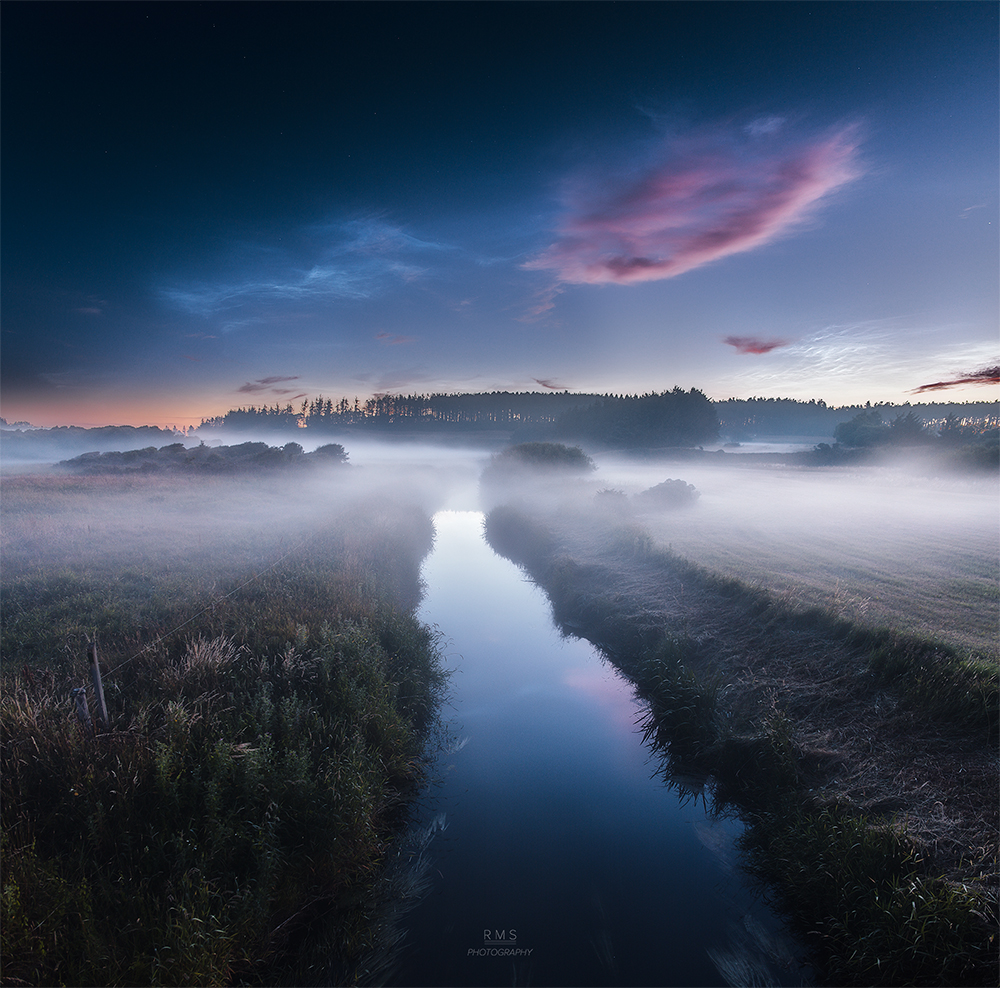
Near a summer's midnight a mist haunts the river bank in this dreamlike skyscape taken on July 3rd from northern Denmark. Reddened light from the Sun a little below the horizon gives an eerie tint to low hanging clouds. Formed near the edge of space, the silvery apparitions above them are noctilucent or night shining clouds. The icy condensations on meteoric dust or volcanic ash are still in full sunlight at the extreme altitudes of the mesophere. Usually seen at high latitudes in summer months, wide spread displays of the noctilucent clouds are now being reported. via NASA https://ift.tt/2KD0Um5
Ice Block Avalanche

One of the most actively changing areas on Mars are the steep edges of the North Polar layered deposits. via NASA https://ift.tt/2MX4iFs
Charon: Moon of Pluto

A darkened and mysterious north polar region known to some as Mordor Macula caps this premier high-resolution view. The portrait of Charon, Pluto's largest moon, was captured by New Horizons near the spacecraft's closest approach on July 14, 2015. The combined blue, red, and infrared data was processed to enhance colors and follow variations in Charon's surface properties with a resolution of about 2.9 kilometers (1.8 miles). A stunning image of Charon's Pluto-facing hemisphere, it also features a clear view of an apparently moon-girdling belt of fractures and canyons that seems to separate smooth southern plains from varied northern terrain. Charon is 1,214 kilometers (754 miles) across. That's about 1/10th the size of planet Earth but a whopping 1/2 the diameter of Pluto itself, and makes it the largest satellite relative to its parent body in the Solar System. Still, the moon appears as a small bump at about the 1 o'clock position on Pluto's disk in the grainy, negative,telescopic picture inset at upper left. That view was used by James Christy and Robert Harrington at the U.S. Naval Observatory in Flagstaff to discover Charon 40 years ago in June of 1978. via NASA https://ift.tt/2ugsxGX
County Fire Lights Up the Night

Light from the County Fire illuminated the night skies of Northern California when the Suomi NPP satellite acquired this image overnight on July 1, 2018. via NASA https://ift.tt/2u9uCnN
Dawn s Early Light, Rocket s Red Glare

If you saw the dawn's early light from Cape Canaveral Air Force Station last Friday, June 29, then you could have seen this rocket's red glare. The single 277-second long exposure, made from the roof of NASA's Vehicle Assembly building, shows a predawn Falcon 9 launch, the rocket streaking eastward into the sky about 45 minutes before sunrise. At high altitude, its stage separation plume is brightly lit by the Sun still below the eastern horizon. The Falcon 9 rocket's first stage had been launched before, lofting the Transiting Exoplanet Survey Satellite (TESS) into orbit on April 18, only 72 days earlier. For this launch of SpaceX Commercial Resupply Service mission 15 (CRS-15) it carried an also previously flown Dragon capsule. But no further reuse of this Falcon 9 was planned so no dramatic first stage landing followed the launch. The Dragon capsule arrived at the International Space Station on July 2. via NASA https://ift.tt/2z8js8B
Burst of Celestial Fireworks

Like a July 4 fireworks display a young, glittering collection of stars looks like an aerial burst. via NASA https://ift.tt/2tTuglS
An Airplane in Front of the Moon
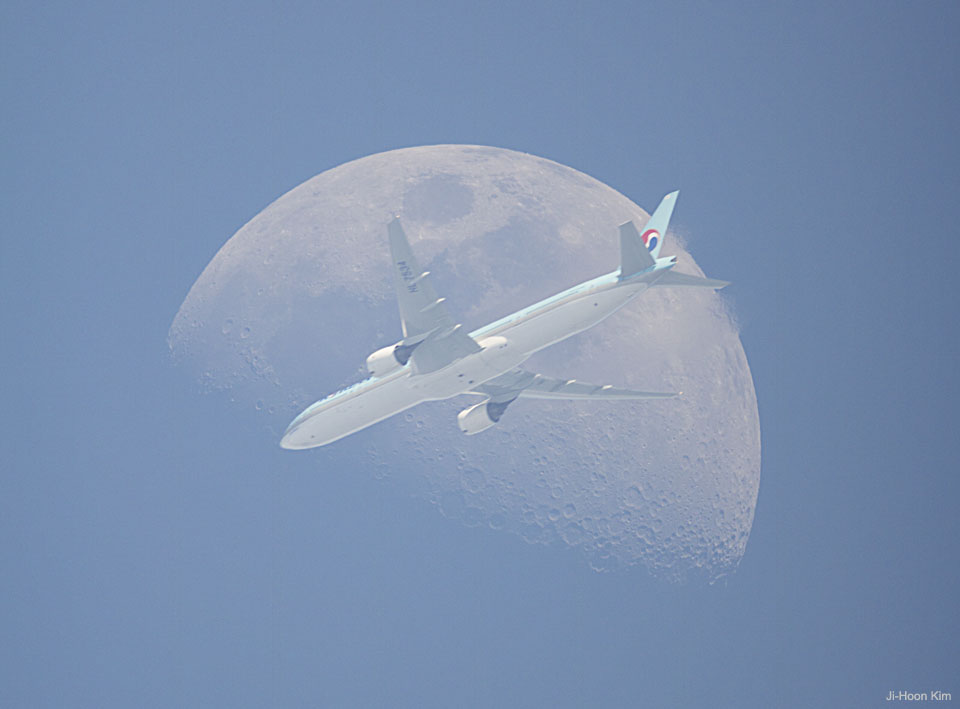
If you look closely at the Moon, you will see a large airplane in front of it. Well, not always. OK, hardly ever. Actually, to capture an image like this takes precise timing, an exposure fast enough to freeze the airplane and not overexpose the Moon -- but slow enough to see both, a steady camera, and luck -- because not every plane that approaches the Moon crosses in front. Helpful equipment includes a camera with fast continuous video mode and a mount that automatically tracks the Moon. The featured fleeting superposition was captured from Seoul, South Korea two weeks ago during a daytime waxing gibbous moonrise. Within 1/10th of a second, the airplane crossing was over. via NASA https://ift.tt/2lQ8f3b
Seeing Jupiter

Citizen scientist Kevin M. Gill created this image of Jupiter using data from the Juno spacecraft's JunoCam imager. via NASA https://ift.tt/2tWvOLb
Subscribe to:
Comments (Atom)